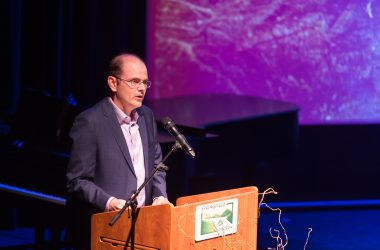Bond approval would put 5-year, $20 million plan into action for 6 streets
SPRINGFIELD – With election day quickly approaching, it’s time for Springfield voters to consider their position on the City’s proposed bond measure to fund street repairs.
Bond Measure 20-351 proposes a five-year, $20 million general obligation bond to fund repairs for six streets:
▯ Harlow Road from I-5 to the roundabout at Pioneer and MLK Jr. parkways
▯ Aspen Street from Tamarack Street to Centennial Boulevard
▯ G Street from 10th to 23rd streets
▯ 36th Street from Main Street to Commercial Avenue
▯ Daisy Street from S. 51st Place to Bob Straub Parkway
▯ 58th Street from Main Sreet to Thurston Road
These six were chosen over the course of three meetings with council and were selected from a list of about 15-20.
“The reality is, as I told councilor (Kori) Rodley, I could throw a dart at a map of Springfield, and there’s a great project wherever it lands,” said Jeff Paschall, development and public works community development director. “It really comes down to (obtaining) resources so we can get everywhere.”

City staff assesses Springfield streets every couple years to rate them as green, yellow, or red, among other criteria. A green street is one that is in really good shape, and a red street is one that needs reconstruction. The yellow streets are the in-between which are considered “saveable” from needing reconstruction.

“What we’re trying to do is put our dollars where they’ll go the farthest by preserving and bringing those yellow streets into the green category,” Paschall said. “If we were to do two reconstruct projects, we would be lucky to get 2 miles with $20 million.”
This bond measure proposes about 4 miles of street repair which includes the required update to pedestrian facilities like sidewalks and ADA ramps.
Also, while reconstruction projects can last almost two years, like the Mill St. project, preservation projects typically take a few months. This quicker turnaround is another reason why the City is targeting yellow streets.
The bond measure also requires City staff to provide an annual report which would state: what is being worked on, how much money has been spent, a timeline for the projects, etc.
“We really try to get that in front of people because we do want to be transparent,” Paschall said. “We want everybody to know where the dollars are going.”
The City is proposing this bond measure because it does not currently have a funded street preservation and repair program, yet more than 50% of streets have cracking, potholes, and grooves.
Revenue for street repair typically comes from gas tax dollars, but Paschall noticed that gas tax dollars are flat lining as more people opt for electric or hybrid vehicles. Although the revenue from gas taxes is stagnant, the costs of street repair are increasing due to inflation. For example, Paschall said striping has increased from $0.50/foot to $5/foot over the years.
“The revenue we’re getting is, in a way, barely covering what we need to do just to operate and maintain the system on a day to day basis, so that doesn’t leave us with many funds left over to put into our capital preservation program, which is what the bond would cover and what we’re asking for,” Paschall said. “That’s just an unfortunate situation that we’re in and how we generate revenue for the street system.”
He emphasized that “there are no dollars which comes to general funds for streets,” meaning property taxes do not go toward street repair.

If the bond measure passes, the City said it would cost about $0.74 per $1,000 of assessed value each year for five years beginning July 1. As the bond is based on assessed value, not market value, and the median assessed value of residential property is $182,500, it is expected that the average homeowner would pay about $135/year in estimated taxes, which equates to $11.25/month.
All money collected would be put toward street repair, which would first happen on the six proposed streets.
If the bond measure does not pass, Paschall said the City will focus on its federally-funded projects and circle back to council to discuss next steps for repairing the six listed streets. Paschall said the City uses federal dollars for red streets since those require the most expensive repairs and extensive timelines.
Other ways the City could consider funding its street repairs include raising the gas tax or implementing a transportation utility fee (TUF). Paschall noted that raising the gas tax may not be an effective solution.
“There’s a lot more electric vehicles on the roadway, so while they’re still maybe the same miles driven or more miles driven, we’re not seeing the same revenue just because of the efficiency – which is great for the environment, but those cars still do about the same damage or more damage to the roadway,” Paschall said.
As far as TUFs go, Paschall said this is the solution over 40 cities have now chosen. The TUF is a user fee which is comparable to the stormwater and wastewater systems which Paschall called “a more stable source of revenue.”
“There isn’t really a magic potion or elixir out there. It’s just figuring out where we can generate more revenue because that’s what we need to do,” Paschall said.







